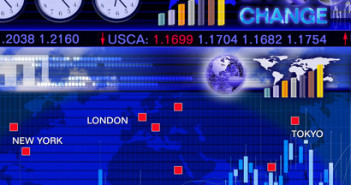World equities, with the exception of the Nikkei, were bolstered by strong Purchasing Managers Index (PMI) readings from China and the euro zone.  The HSBC flash manufacturing PMI reached an 18 month high of 52.0 in July from 50.7 the previous month and marks the second consecutive month in expansion territory. The solid reading can be attributed to new export orders and the government’s stimulus efforts in infrastructure, reduction in reserves for cash banks and tax breaks for small businesses.
The Nikkei and yen faltered overnight as Japan’s trade deficit reached a record of 822.2 billion yen in the first six months of the year where exports declined 2% y/y to 5.94 trillion yen while imports gained 8.4% to 6.76 trillion yen. This set of data come days after the Cabinet Office lowered its fiscal year growth forecasts to 1.2% citing weak exports, a jump in imports and the impact of the April sales tax hike on consumer spending and business confidence for the downward revision. In other data, manufacturing PMI registered a reading of 50.8%, down from June’s print of 51.5.
Looking towards Europe, the euro received a much needed bounce from Markit’s composite PMI which reached a three month high of 54.0 in June from May’s 52.8 while the service PMI at 54.4 logged the highest level attained in three years. While it is encouraging that output from the peripheral sovereigns is expanding at its fastest pace since 2007, on pace of that of Germany, manufacturing in the euro zone continue to lag as the Ukraine crisis is impeding new orders. France, the euro zone’s second largest economy, continue to contract with French PMI coming in at 47.50 in July, with the French Prime Minister, Manuel Valls, blaming the strength of the euro for his country’s economic performance.
Retail sales in the UK, although stagnated month on month at 0.1% in June from May; its quarterly performance from April to June rose 1.6%, its strongest calendar quarter showing since early 2004. Amid an environment of low inflation, the British consumer armed with more spending power has been the main driver for the economic recovery. However, with wage growth remaining weak, it begs the question, for how much longer can the consumer prop up the economy ahead of Friday’s GDP reading, expected to expand 0.8% in the second quarter.
As we head into the North American session, stock futures will look to set another record high following the S&P 500’s performance on Wednesday on the back of strong earnings reports from the likes of Facebook, Apple and Microsoft. Today’s economic calendar is relatively light with focus on jobless claims, Markit manufacturing PMI anticipated to come in at 57.5 and new home sales for June. Jobless claims reached its lowest level in over eight years at 284,000 and suggest that the labor market recovery is gaining traction and could provide the impetus needed for the Federal Reserve to remove further accommodation from the economy.
The lack of domestic data for Canada will leave the Canadian dollar vulnerable to broader market themes. Recent data has been supportive of the loonie with stronger than anticipated domestic CPI, manufacturing sales, international securities transactions and wholesale sales. For USD/CAD to turn substantially lower, we will need to see a shift in tone from the Bank of Canada.
Further reading:
Jobless claims reached its lowest level in over eight years at 284,000
Purchasing Managers Index (PMI)



